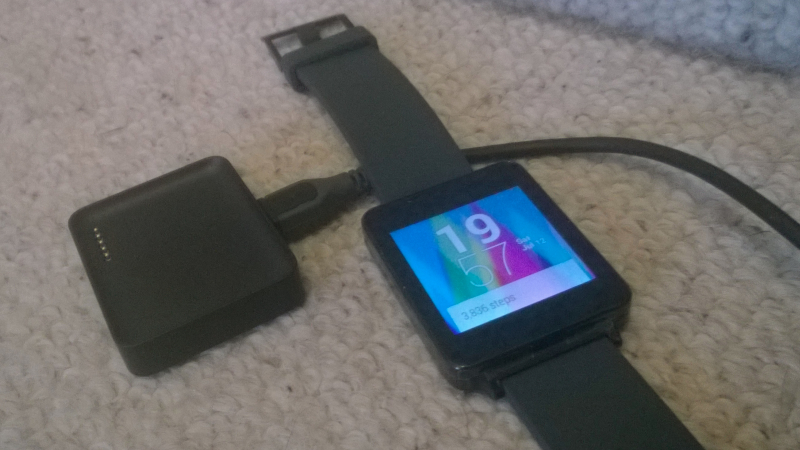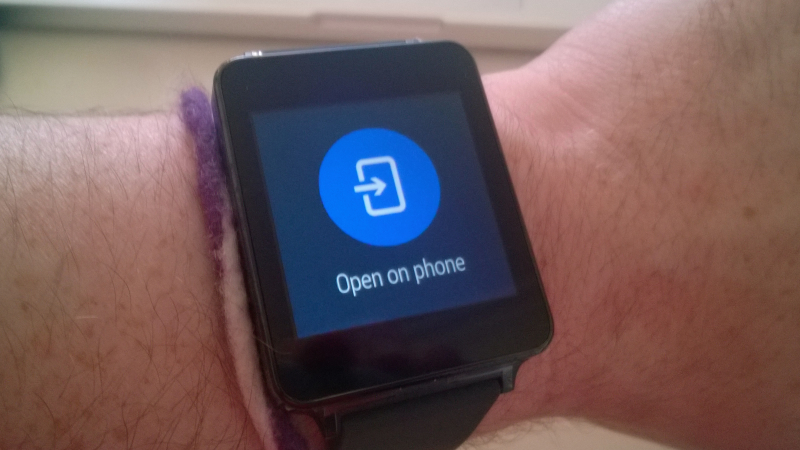Just as Google presented the world with their vision of a modern mobile operating system in Android, the Mountain View based company has delivered a vision of wearable computing. In Android Wear Google is again doing the hard work for companies by dealing with the operating system, helping with hardware integration, and creating a name and brand that consumers will hopefully trust in years to come.
With the release of the Samsung Gear Live and the LG G Watch (reviewed here on Forbes), anyone can pick up an Android Wear device and partake in Google’s vision of the future. It is far from complete, but even with this first public iteration, the direction that Google would like wearable computing to evolve is clear.
The vision Google has puts all the services provided by the digital behemoth at the center of your personal universe. Android Wear is an extension of your smartphone (which of course needs to be running a relatively modern version of Android) and you need to be fully connected to the digital world so Android Wear can work its predictive and alerting magic.
That makes me a touch wary of the demand Android Wear puts on the user. Much of the UI is built around the notifications on your smartphone and relaying them to your wrist in a way that forces you to take action on that notification immediately. The alert arrives on your wrist, you look at it, and if you decide to action it you’ll be passed back to your phone screen which should be ready for you to do the notification’s bidding. Job done, your phone goes back in your pocket until it wants you to deal with another alert when it sends one to your wrist.
Who’s in charge of that process? Not you. Android Wear puts the technology in charge. Let me explain.

The LG G Watch (photo: Ewan Spence)
Android Wear’s handling of notifications make it clear that Google wants you to deal with them immediately. Each notification card that arrives on your wrist takes up most of the screen, and provides you just enough information to give you context, but not enough that you can decide fully to deal with something – you get the start of an email, you get to know who replied to a status on Facebook, you know there’s part of a Twitter reply you can read. If you are going to all the trouble of sending information to someone’s wrist, why can you not send the whole message?
It appears that the goal is to get you to swipe to the side and select Android Wear’s default â€Open on Phone†command. Bespoke applications for Android Wear can add to these commands (the Gmail alert has an “archive†option) but with almost all of the the standard notifications around Google’s services, it’s all about getting you to do something on your phone…which is where Google can monetize you as a user.
There’s also no history view. Once I dismiss a card from my Android Wear watch, it’s gone from the watch forever and there’s no way to call it back. Samsung’s range of Gear devices and Pebble’s smartwatches both offer history options so you can recall what you have missed, go back through a timeline to deal with issues, and generally allows you to deal with alerts with less pressure to act immediately.
Android Wear needs a history/recall option in as short a timescale as possible.

Android Wear interaction (photo: Ewan Spence)
If I am playing a music track on my smartphone, the Android Wear screen will have a media player that lets me skip forwards, back, or pause the track. Two things are missing for me that really should have been considered as launch features. First would be an option to control the volume, and the second would be the ability to start playing a music track when the player has stopped (not paused). If I want to start listening to music, I have to take my handset out, press play on the phone, and then put it away and let the watch do the rest. Unless I swipe the card away or stop the music, in which case it’s back out with the phone to start it again.
That’s one example of an interaction process that has the wrong focus. Android Wear should not be a subservient second screen, it should be able to control your phone and be the primary interface. A smartwatch must add functionality and make best use of the unique capabilities and physical positioning it has to be attractive to the general consumer. It should not be a device that defaults to “…and now pick up your phone.â€

Android Wear interaction (photo: Ewan Spence)
As well as using the Android notification system, Android Wear ties heavily into Google’s digital personal assistant project Google Now. This should be familiar to Android users as it is part of the Google Search app that is included in every handset that has Google services enabled. Opening up Google Now on a handset will lead to a number of cards being displayed with relevant information based on the search habits and preferences set by the user, some of them being reactive to conditions, others being predictive and trying to present you with something Google thinks you need to know.
Android Wear users will find that Google Now’s interactions with them become a lot more proactive. Rather than wait for you to open the app up on a smartphone, Google Now cards are pushed directly to the screen of the Android Wear device. The weather around you is the obvious winner here, and a weather card has been waiting for me every morning on the LG G Watch. It also shows off the ability of Android Wear apps to have secondary information screens which are a left swipe away before all the commands are reached (a right swipe of course dismisses the card, and if you want to check the weather again, off to the smartphone you go).
Article source: http://www.forbes.com/sites/ewanspence/2014/07/13/the-android-wear-review-googles-vision-of-a-smartwatch-is-a-tantalizing-look-into-the-future/
